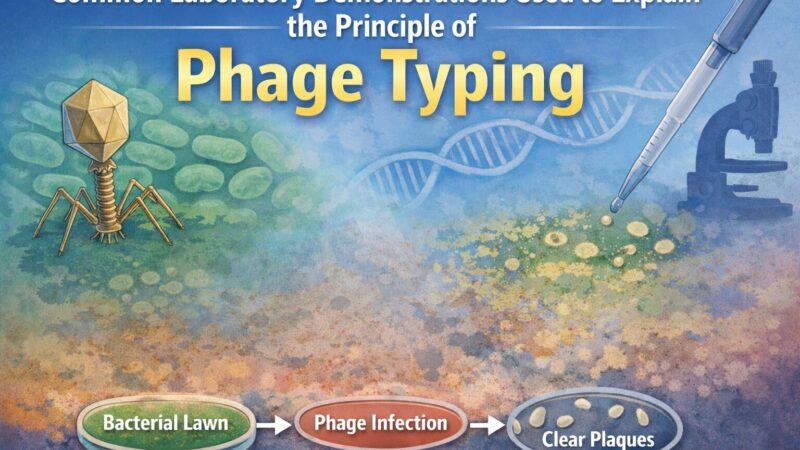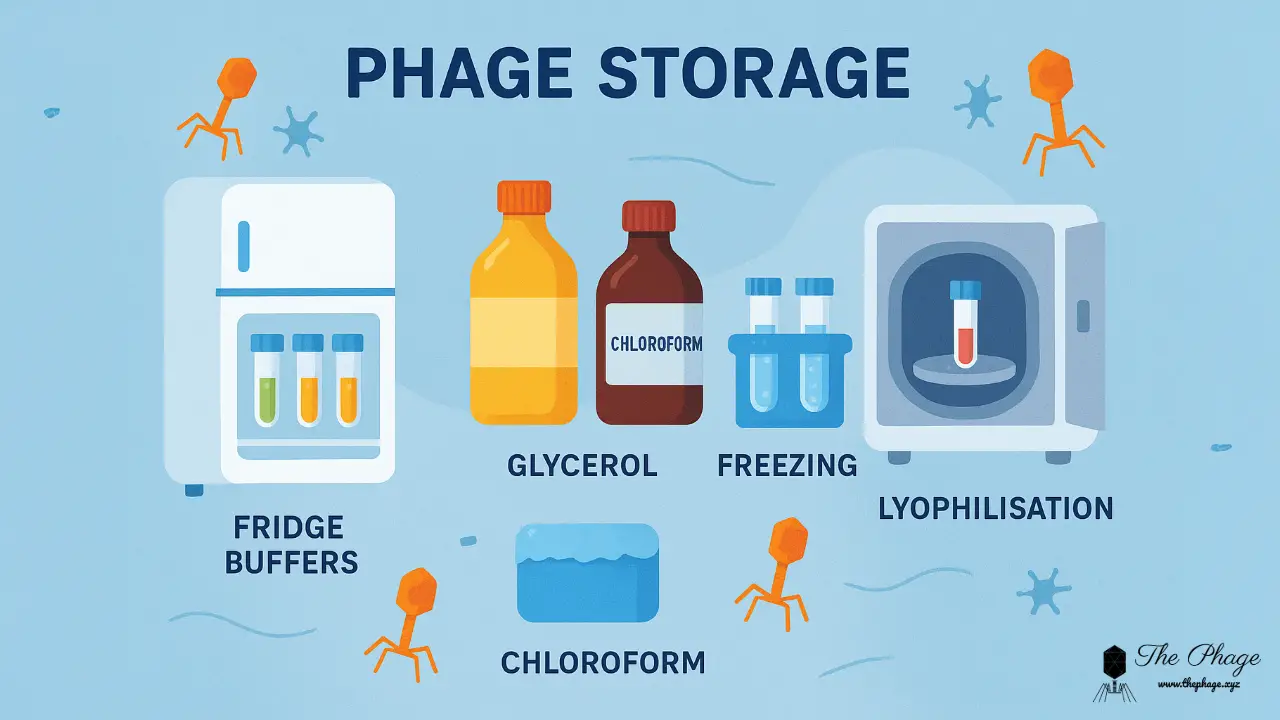
Our recent LinkedIn poll series sought to gauge public understanding of a fascinating topic: the diversity of bacteriophages (viruses that infect bacteria) compared to that of bacteria. The results (shown in the chart below) indicated that 78% of participants believed bacteriophages are more diverse, 5% thought bacteria hold the title, 8% believed both are equally diverse, and 9% were unsure or needed more information. Well, we felt it would be of no harm to provide the 9% with more information about this question.

This poll raised an interesting question—one that’s scientifically rich and worthy of detailed exploration. So, are bacteriophages really more diverse than bacteria? Let’s break it down.
The Immense Diversity of Bacteria
Bacteria are among the oldest and most diverse forms of life on Earth, inhabiting virtually every environment, from deep-sea vents to the human gut. That’s why you often hear that bacteria are everywhere. Some key numbers reflect their incredible diversity:
- Species count: There are an estimated 10 million to 1 billion bacterial species on Earth (but keep in mind, we haven’t identified all of them yet; so far, we know only a fraction).
- Genomic diversity: The bacterial genome can range from a few hundred genes to thousands. Parasitic bacteria tend to have fewer genes, while free-living bacteria have many more. This explains why they are parasitic, right? They rely on the host to provide what they lack. Overall, this leads to significant functional diversity among bacteria.
- Habitat diversity: Bacteria are ubiquitous, found in extreme environments (extremophiles), in soil, water, and even in symbiotic relationships with plants, animals, and humans.
It’s clear that bacteria are incredibly diverse, but how does this compare to bacteriophages?
The Case for Bacteriophage Diversity
Bacteriophages, or phages, are viruses that specifically infect bacteria. They are also found in every environment where bacteria exist, which means they are incredibly widespread. Here’s what makes them stand out in terms of diversity:
- Sheer numbers: Phages outnumber bacteria by a factor of 10, with an estimated 10 nonillion bacteriophages on the planet. You may have never heard the term “nonillion,” but in comparison, bacteria number around 1 nonillion. To give a sense of scale, there are about 10 million times more phages than there are stars in the observable universe, making them the most abundant biological entities on the planet.
- Genetic diversity: Phages are renowned for their genetic variability. Studies have shown that no two phage genomes are exactly alike, even when isolated from the same bacterial species. This may be due to their very small yet “fragile” genomes.
- Mutation and evolution rates: Phages mutate and evolve rapidly, much faster than bacteria, because of their high reproduction rates and smaller genome sizes. This makes them incredibly adaptable to changing environments and capable of evolving to infect new bacterial hosts.
- Environmental diversity: Like bacteria, phages are found in diverse environments, including the human body (in the microbiome), oceans, soil, and extreme environments like hot springs and hydrothermal vents.
One major reason for phage diversity is their “arms race” with bacteria. As bacteria evolve defenses (e.g., CRISPR systems, restriction-modification systems), phages must evolve new strategies to infect them. This ongoing evolutionary battle drives both bacterial and phage diversity, but because phages outnumber bacteria, their genetic diversity is potentially greater.
Scientific Insights: Recent Research on Phage Diversity
Recent studies continue to reveal new insights into the diversity of bacteriophages. A 2021 study published in Nature Microbiology highlighted the vast, previously unknown diversity of phages in the human gut, estimating that the number of distinct phage species in a single human gut may rival the number of bacterial species.
Another study from 2023, published in Cell Host & Microbe, explored the “dark matter” of the viral world—viral sequences that don’t match any known viral genomes. This research found that phages represent the majority of these unknown sequences, suggesting that we’ve only scratched the surface in understanding phage diversity.
Additionally, research into marine phages has revealed that they play a crucial role in global nutrient cycles by infecting marine bacteria. Marine phages have unique genes that allow them to manipulate their bacterial hosts, further emphasizing their adaptive complexity.
Environmental Impact on Phage and Bacterial Diversity
Bacterial and phage diversity are strongly influenced by their environments. For example:
- Marine environments: The ocean is home to around 1 billion to 10 billion bacterial cells per liter (this fact varies from source to source), and the bacteriophages that infect them are equally numerous. Marine phages are thought to be the most diverse due to the vast array of bacterial hosts.
- Extreme environments: Extremophilic bacteria, found in environments like acidic hot springs and high-salinity lakes, are accompanied by specialized phages that have evolved to infect them under these harsh conditions.
- Human microbiome: The human body, particularly the gut, is a hotspot for both bacterial and phage diversity. Phages in the gut help maintain bacterial populations, influencing digestion, immunity, and, as some studies suggest, even our mood. In the human gut, phages tend to be integrated into the host genome; this is known as prophage, and they only turn into active phages under certain circumstances. In the human gut, phages are present in a 1:1 ratio with bacteria.
Let’s get back to the question: Are Phages More Diverse?
Based on current scientific evidence, it’s safe to say that bacteriophages are more genetically diverse than bacteria. While bacteria display remarkable diversity in their species count, environmental adaptations, and functional roles, phages surpass them in terms of sheer numbers, genetic variability, and evolutionary adaptability.
The evolutionary arms race between phages and bacteria continually generates new phage variants, keeping them ahead in the diversity game. But the diversity of both is deeply intertwined, as each influences the other’s evolution.
So, if you voted “Yes” in our poll, you’re in good company with the scientific consensus!
Disclaimer: The Phage LinkedIn page is followed by many phage scientists and enthusiasts. While it also includes individuals who have been patients or are interested in learning more about phage therapy, this poll may not accurately represent the broader public perspective and could introduce bias.
References
To dive deeper, here are a few key studies:
- Curtis TP, Sloan WT, Scannell JW. Estimating prokaryotic diversity and its limits. Proc Natl Acad Sci U S A. 2002 Aug 6;99(16):10494-9. doi: 10.1073/pnas.142680199. Epub 2002 Jul 3. PMID: 12097644; PMCID: PMC124953.
- Schloss P D, Handelsman J 2004. Status of the Microbial Census. Microbiol Mol Biol Rev 68:.https://doi.org/10.1128/mmbr.68.4.686-691.2004
- Dion, M.B., Oechslin, F. & Moineau, S. Phage diversity, genomics and phylogeny. Nat Rev Microbiol 18, 125–138 (2020). https://doi.org/10.1038/s41579-019-0311-5
- Chevallereau, A., Pons, B. J., van Houte, S., & Westra, E. R. (2022). Interactions between bacterial and phage communities in natural environments. Nature Reviews Microbiology, 20(1), 49-62.



Leave a Reply
You must be logged in to post a comment.